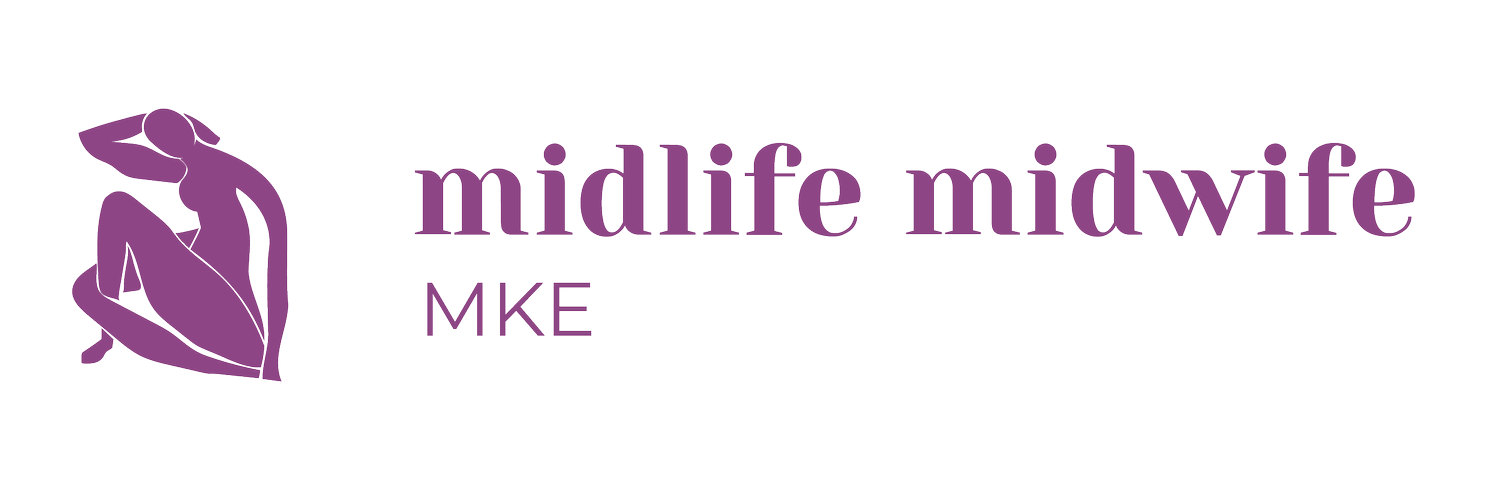
August 01, 2024
Menopause Facts and Myths
Like many women’s health issues, menopause has often been a taboo topic of conversation, leading to confusion when symptoms arise for many women approaching their 40s.
Even more confounding, as women are having children later in life, they often find themselves at the intersection of fertility, postpartum, motherhood exhaustion and perimenopause between ages 35 and 45. The onslaught of symptoms ranging from fatigue and hot flashes to brain fog and hair loss can really interrupt daily life.
“The impact of the brain fog and memory changes is probably one of the harder pills to swallow,” says Dr. Seema Afsari, Integrative Primary Care and Functional Medicine doctor with Vytal Health. “We all assume some changes to the body are natural as we age, but when you don’t perform mentally at a capacity with which you are accustomed, this can be a jarring discovery.”
Unfortunately, it can be difficult to discern if symptoms are a result of impending menopause or just lifestyle choices and circumstances. But truly, symptoms are the telltale sign of hitting perimenopause.
By definition, perimenopause refers to the months and years that precede menopause. As a woman’s hormones shift, her cycle becomes erratic and symptoms set in. A woman is in menopause after a 12-month span without menstruation, indicating that her ovaries have stopped the production of hormones that drive the cycle. From a biological perspective, this definition is a bit in flux because the ovaries stopping estrogen production can be a gradual process.
Perimenopause can start between ages 35-50 and typically lasts anywhere from one to 10 years. That’s a long and unpredictable amount of time to not feel like oneself. And the typical perimenopause symptoms don’t usually stop when a woman is in menopause.
“The study that explored this best was the Study of Women’s Health Across the Nation [SWAN], which showed women are most symptomatic in late perimenopause and symptoms are most intense around the final menstrual period,” says Dr. Jenna Sarvaideo, endocrinologist at Froedtert and Milwaukee VA Hospital. “Another study from JAMA Internal Medicine in 2015 quantified that the median duration of symptoms is 7.4 years and that symptoms persist for about 4.5 years after the final menstrual period.”
We asked four doctors with different training and disciplines to weigh in on the confusion surrounding perimenopause and menopause. They discuss and dispel the most common myths using their professional training and personal experiences.
Myths of Perimenopause
Myth #1: Perimenopause symptoms signal that menopause is right around the corner.
A woman may experience perimenopause symptoms for up to 10 years before she actually stops menstruating. Adrenal gland imbalance can also be a central player in hormonal shifts, says Dr. Afsari. Finding ways to support adrenal function through lifestyle changes and supplements is a way to maintain balanced, cyclic living before menopause begins.
Myth #2: Perimenopause starts at a specific age and follows the same path for everyone.
As with many health conditions, everyone is a unique individual and experiences changes in her own time. Some women experience “early menopause” before age 40, which means they may have perimenopausal symptoms in their late 20s to early 30s. “Some women are still cycling regularly and are fertile into their mid 50s,” says Dr. Lynd. “Some women sail through, and others have debilitating vasomotor symptoms into their 70s.”
Myth #3: You’ll inevitably gain weight and lose your libido.
Weight gain around the abdomen is common due to hormonal changes in menopause. But more often, weight gain in middle age is related to aging, lifestyle and genetic factors. Dr. Afsari suggests using this transition time to re-evaluate where you place your energy and focus on supporting any underlying imbalances that may have been previously neglected.
Lack of libido can be real as estrogen and testosterone levels decrease … again, however, everyone is different. Prioritizing and finding new ways to achieve intimacy with a partner can be an unexpected benefit during the perimenopause years.
Myth #4: Perimenopause symptoms are only caused by plummeting estrogen.
There are actually several reasons and changes taking place that contribute to over 30 different symptoms, including the vasomotor symptoms like hot flashes. “It’s not just the reproductive system,” says Dr. Lynd. “The hormonal changes impact almost all cells and organ systems in the body.” A woman’s cycle becomes more erratic partially because she is no longer ovulating consistently and is not producing progesterone. Low progesterone is also linked to anxiety, insomnia and irritability.
Many of the symptoms of perimenopause can also be from overactive adrenal function, declining thyroid function, and undiagnosed food sensitivities rather than a decline in estrogen.
Myth #5: You can test hormone levels to determine if you are in perimenopause.
There isn’t a single test that can show if a woman is in perimenopause. Some labs can inform treatment options, but symptoms and health history are the best determinant of a woman’s status. Often, irregular cycles are the first sign that hormones are shifting and a woman is in perimenopause, but for others who have had irregular cycles in the past, it can be other symptoms like fatigue, brain fog or insomnia. While checking hormone levels can be helpful, they fluctuate so much throughout the month and can look completely normal when a woman is in the throes of perimenopause.
Blood testing can be done to check thyroid function, vitamin levels and insulin to inform metabolic function. An integrative doctor will often recommend salivary or urine testing to indicate the metabolism of specific hormones like cortisol, estrogen, progesterone and testosterone.
Myth #6: A gynecologist is the best doctor to support women through perimenopause.
A gynecologist is often a woman’s first stop when changes begin, as they are the primary caretakers during a woman’s fertile years. While many of them can help through perimenopause, gynecologist aren’t always specially trained for this time in a woman’s life.
As an endocrinologist, Dr. Sarvaideo specializes in hormones and is typically a woman’s next stop when she is feeling the effects of changing hormones.
Dr. Lynd is board-certified both in gynecology as well as integrative medicine “Wearing both hats, I’m fortunate to have many more tools in my toolbox to help my patients navigate the menopause transition,” she says. “Using the best of traditional allopathic medicine and the evidence informed use of integrative methods is the most pragmatic approach to a healthy menopause transition and chronic disease prevention.”
Myth #7: Hormone replacement therapy (HRT) is the only available medication to treat menopause symptoms.
Medication options to treat perimenopause symptoms are very tailored to the woman and take into account family and person health history. History of gynecological cancers, heart disease, clots or miscarriage are all reasons to stay away from HRT at first.
“Using HRT during perimenopause can present a risk of more bleeding,” says Dr. Sarvaideo. “Oral contraceptive pills or SSRIs are good options to treat symptoms, so I often work with other specialists to find the best fit for a patient.”
Lippman favors transdermal hormone creams or patches and finds them just as effective as pills. There is also a new FDA-approved drug called Veozah to treat hot flashes that is not a hormone.
Myth #8: Hormone replacement therapy can cause cancer.
A 2002 study, the Women’s Health Initiative, purported estrogen-alone HRT could increase the risk of several chronic diseases, including breast cancer. “This study
single-handedly set the study of women’s health back several decades,” says Dr. Lynd. “Happily, this is now changing, but the data is coming out faster than clinicians can keep up.”
Dr. Sarvaideo urges people to keep an open mind because there can be conflicting findings in medical literature or information taken out of context. For example, the Women’s Health Initiative didn’t take into account other factors that can cause cancer, such as obesity and alcohol use among participants.
Myth #9: You cannot get pregnant when in perimenopause.
Although a woman’s menstrual cycle is irregular, she is still ovulating and as long as she is menstruating, she can still reproduce.
Myth #10: Menopause is an undesirable time in a woman’s life.
It’s not the beginning of the end just because you stop producing hormones. Menopause is a natural transition and the beginning of a new chapter. It can be an exciting
journey full of opportunities for growth, self-discovery and empowerment. Dr. Afsari tells women to think of it as “spring cleaning” and a time to reassign values. Some women find that shifting hormones can even benefit them if they they’ve suffered in the past from ailments like migraines.
“When women have the tools to navigate the menopause journey, they have a better understanding of their bodies and what it means to feel and live well,” says Dr. Lynd. “They are then more able to celebrate the strength and resilience that comes with age and are able to embrace their journey with courage, grace, curiosity and an open heart.”
Menopause Resources
Where is a woman to turn when she’s not feeling like herself and thinks she could be in the throes of perimenopause? Starting with a primary care doctor or gynecologist is always a good idea, since they typically know your health history.
There are several additional local resources and specialists to help women navigate this important transition in their lives.
The Interwovxn podcast and newsletter are empowering women by sharing real stories of women re-writing the narrative of middle life and taking control of the journey. Interwoven co-founders Theresa Kopac and Rebecca Jankowski are committed to helping women at all stages of life through their own practices. Jankowski is a women’s health acupuncturist, and Kopac is a motherhood practitioner and postpartum doula. They partnered with the author of “The Menopause Myth,” Dr. Arianna Sholes-Douglas, to create a free perimenopause guide at interwovxn.com.
The Menopause Society has a directory on its website that can help women find a menopause specialist in their area. It also connects physicians with the newest data on menopause health. For example, recent research has shown that starting HRT during perimenopause may have an added benefit when balancing out any risk factors.
Online companies such as Evernow, Midi and Alloy have popped up and are offering memberships starting at $29 a month for personalized care from doctors, including HRT delivered right to a woman’s door. Evernow is backed by celebrities Cameron Diaz, Drew Barrymore and Gwenyth Paltrow.
“The online market exists because the local community is not able to support the demand. I have seen many women get oral therapy online, which is unfortunate. They were simply asked preference with no discussion of the risk-benefit profile,” says Dr. Lynd. “It’s always best to work with a clinician who knows your health history.”
Lippman agrees that it’s important to have face-to-face conversations with a provider about overall health and look at everything to improve quality of life. “The midwife model of care is patient-centered and open to traditional and complementary medicine,” she says.
Natural supplements like ashwagandha aid with adrenal support and stress response. For low-progesterone symptoms, Dr. Afasri recommends chaste tree berry and maca root, or for estrogen metabolism problems, she likes Estro-Dim. A wholefood diet and vitamins like B complex, magnesium, and omega-3 can also go a long way to help women feel better.
Simple self-care techniques like breath work and gentle exercise may be some of the best, most proactive strategies women can do to support themselves during this important transition.




